The official history of the papacy covers a period of 1,700 years. The papacy itself is not a purely religious institution. It would be more correct to call it political-religious. It unites 1 billion 300 million Catholics living in almost all countries of the world. Relies on bishops, of whom there are 4 thousand. In Catholicism there are three degrees of priesthood: deacon, priest and bishop.
There are also cardinals. These are clergy from deacons, priests and bishops. Depending on the priesthood, cardinals are divided into ranks and united in the College of Cardinals. She performs advisory functions with the pope and elects the next pope at the conclave. This system is streamlined, proven and highly effective. It is not for nothing that Catholicism is so popular in the world and unites a huge number of believers into a single confession.
Was the Apostle Peter the first pope?
The Catholic Church officially considers the Apostle Peter to be the first pope.. He is also considered the first bishop. It was this man who created the first Christian community in Rome after Christ was crucified. In 64, a terrible fire broke out in the “eternal city”. The Romans believed that the culprit was Emperor Nero. He allegedly wanted to destroy the old city, and in its place build a new one and call it by his own name.
To divert suspicion from himself, Nero blamed Christians for the arson. Members of the community were captured and thrown into prison. Peter was also arrested. He was crucified upside down, since the apostle considered that he had no right to be crucified like his teacher Christ. The Basilica of St. was subsequently erected on the site of the tragedy. Petra. This is the official version of Catholics.
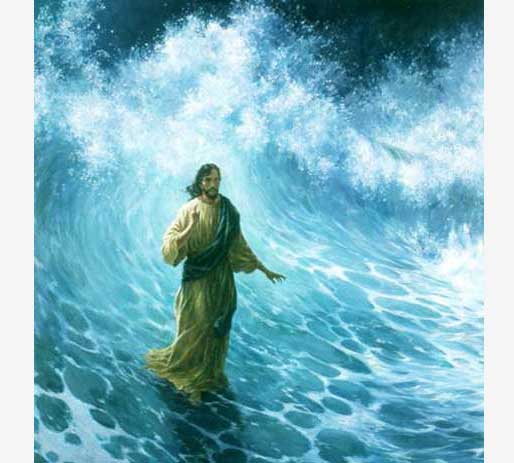
Apostle Peter walking on water
However, these historical facts give rise to great doubt. The point is that Peter did not know Latin. And, therefore, he could not stand at the head of the Roman community. In Rome, people spoke precisely this language, and a disciple of Christ was born in Bethsaida of Galilee. This is an Israeli city in which the family of a simple fisherman Jonah lived.
The future first pope was born in it. He received the name Simon, but did not receive any education. This man could neither read nor write. But he knew how to listen, and Christ’s sermons made an indelible impression on him. It was the Son of God who named him Peter, but did not teach him the Latin language, as well as literacy.
Maybe a miracle happened and the apostle received the necessary knowledge in the blink of an eye? This is unlikely, since we all understand that if we are guided by miracles, we will not be able to objectively perceive history. Therefore, it is more reasonable to assume that Peter’s righteous activities in Rome are fiction.
Papacy from the time of Constantine to the present day
Emperor Constantine and Christianity
The persecution of Christians had no effect on the new religion. It took deep roots in people's souls. The long-awaited shoots appeared only during the reign of Emperor Constantine (306-337). He was an outstanding politician. He moved the capital of the Roman Empire to the Greek city of Byzantium. Significantly expanded it and made it the center not only of the empire, but also of the Christian religion. Subsequently, the city began to be called Constantinople. It was under Constantine that Christians began to gain strength, and the first basilica was built in Rome in 324.
Before Constantine, bishops were considered the spiritual mentors of the flock. They all stayed in Rome. The formation of the papacy began under Bishop Sylvester. His whole life was distinguished by holiness, and this venerable man died in 335. After 2 years, Emperor Constantine also left for another world. But the grace-filled shoots that sprouted under him strengthened the church and made it an authoritative institution, which soon began to significantly influence the political life of the state.
Papacy and power
The struggle for power within the Christian church flared up sharply in 366 under Damasus. He became bishop of Rome, expelling his rival from the city. In this case, about 200 Christians died, since any power requires sacrifices. It was Damasius who was the first to call himself pope and was on the church throne from 366 to 384.
His authority and influence reached such magnitude that the Roman Emperor Theodosius I (379-395) was forced to convene an Ecumenical Council in 381. The Council recognized the Bishop of Constantinople as second only to the Bishop of Rome and forbade the bishops to interfere in each other's affairs. Damasius died at the age of 84 and was canonized.
Actually, from the time of Damasus, the history of the papacy began its inevitable course. And before that there was a prelude, since the Christian religion was very weak and did not have the appropriate authority and weight.
In 753, Pope Stephen II (III), venerable in all respects, showed church and lay people a document allegedly signed by Emperor Constantine himself. It was written in black and white that the ruler transfers all power over the western part of the empire to the Pope, while he himself leaves the eastern part under his control. That is, it turned out that the rank of the pope corresponded to the rank of the emperor. Only in the 15th century did it become clear that this document was a fake.
In July 1054 there was a split in the Christian Church.. It was divided into Roman Catholic and Orthodox. The reason for this tragedy must be sought in the ritual and ethical differences between the Latins and Greeks. Contradictions had been brewing for many hundreds of years, and in the 11th century a denouement came. The Patriarch of Constantinople anathematized the papal legates, and in retaliation they took and excommunicated the Patriarch of Constantinople.
The clergy turned out to be very vindictive. They remembered the insults inflicted for 1000 years. Only in 1965 were the mutual anathemas lifted. But Catholics and Christians, naturally, did not become a single flock, although warmer relations were established between them.
Conflict between Pope Gregory VII and King Henry IV
In 1073, Pope Gregory VII took the papal throne. This most respectable man in all respects led the Catholic Church until 1085. His reign is notable for his conflict with the future Holy Roman Emperor Henry IV (1050-1106).
Gregory VII declared that the power of the pope was superior to that of the emperor. He arrogated to himself the right to depose European rulers. The German king Henry IV opposed this. He gathered the German bishops in 1076, and they declared the pope deposed.
Then the pontiff excommunicated the king from the church. The German princes, who had given an oath of allegiance to Henry IV, found themselves freed from it and rebelled. They began to prepare for the election of another Holy Roman Emperor.
The debunked monarch went through the Alps to the castle of Canossa, where at that time the head of the Catholic Church was located. In January 1077, he found himself under the walls of the fortress. Barefoot, dressed in a hair shirt, the king stood in the cold and waited for the papal decision. Gregory VII watched him from the window of the fortress tower. Only at the end of the third day did he forgive the daring autocrat and remove his penance.
Pornocracy
The history of the papacy is inextricably linked with popes and antipopes. The second are those who bore the sacred title illegally. They received it through bribes or other various cunning methods. A striking example of anti-papacy is pornocracy. This is a whole historical period that lasted several decades. It began with the accession to the papal throne of Sergius III (904-911).
He is considered the murderer of his two predecessors. He turned the papal court into a place of debauchery and theft. Got myself a 15 year old mistress named Marozia. She gave birth to new dads, and then killed them. By her order, 4 popes were killed. At the same time, shamelessness and corruption flourished in the holy of holies of the Catholic Church. Eventually, Marozia was arrested by one of her sons, imprisoned, where she died in 954.
In 955, Pope John XII, the grandson of Marozia, received papal power. He was in power for 8 years. But the situation has not changed for the better. Murder, incest and other immoral acts flourished again. Dad finished poorly. He was killed by a deceived husband who found his wife in the arms of the head of the Catholic Church. This is where the pornocracy ends.
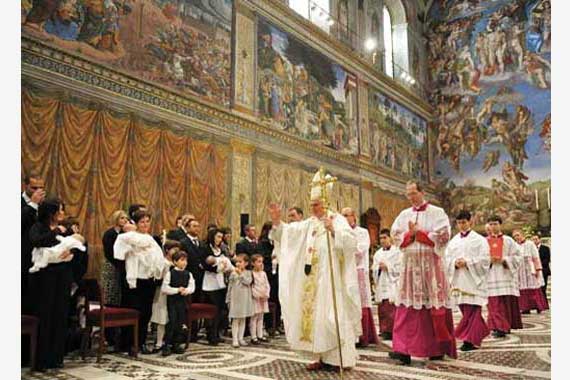
The Pope and his flock
Papacy and money
Popes and antipopes changed, but the desire for absolute power continued. A serious attempt to place church power over secular power was made by Pope Boniface VIII (1294-1303). On this sensitive issue he issued a bull. It said that the pope holds spiritual power in one hand, and secular power in the other.
But the head of Catholicism miscalculated. The period of feudal fragmentation was ending. Royal power grew stronger. And the bull was met with hostility by European monarchs. King Philip IV of France was especially outraged by the papal claims. He initiated the convening of the Estates General. The members of this high assembly demanded that the pope appear before an ecclesiastical court. But the trial did not take place. This was prevented by the death of the pontiff.
After this incident, the ambitions of the popes diminished. They never again clearly laid claim to secular power. High-ranking holy fathers took up other matters. Starting from the 14th century, they began to absolve sins for money. The business turned out to be terribly profitable. Of course, officially such things were strictly prohibited. But it's official. There were many abuses. Naturally, they were carried out with the tacit consent of the popes.
The Church, having forgiven the sinner his sins, gave him an official document - indulgence. That is, everything was furnished to the highest level. The sins of the dead were also forgiven. But here everything depended on the relatives. If they expressed a desire to pay, then the soul of the deceased, it must be understood, went to heaven. True, some far-sighted people discussed such a procedure in their wills. The Catholic Church also practiced issuing licenses to brothels. At the same time, the priestesses of love no longer worried about God's punishment. All sinful acts were forgiven to them in advance.
This whole bacchanalia continued until 1567, that is, more than 250 years. In 1566, Pope Pius V took the papal throne. And the church immediately felt a harsh master's hand. All the outrages that disgrace the work of God were put to an end. The new pope turned out to be a stern, tough man, a supporter of an ascetic lifestyle. He kicked out all the crooks, careerists and opportunists. He put things in order in financial and divine affairs. At the same time, the authority of the Catholic Church increased significantly.
Schism of the Catholic Church
But this did not save her from a split. The Catholic Church has accumulated too many sins over the past centuries. Here no pope could resist the emergence of Protestantism. Led religious reforms Martin Luther(1483-1546). He found many followers. As a result, all this resulted in religious wars that rocked Europe in the 16th and 17th centuries.
In the end, the Catholic Church came to terms with the new denomination. Currently, Protestants live all over the world, and their number numbers 1 billion people. They do not have a single center, unlike Catholics and Orthodox. All churches are united in church unions and enjoy equal rights.
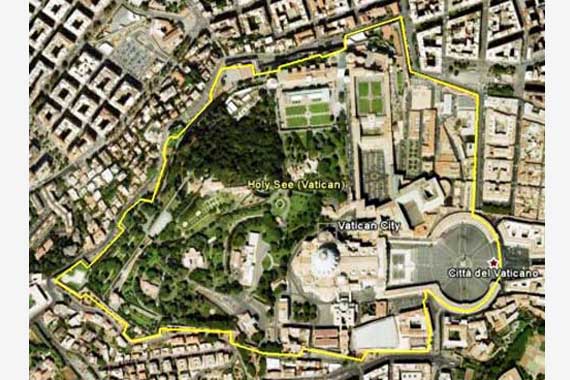
View of the Vatican from above
Vatican and the election of the Pope
Today, the history of the papacy is associated with the Vatican. This is a city-state located on the territory of Rome. The Vatican is the seat of the head of the Roman Catholic Church. It has existed in its current form since February 1929.
It is in this place that the new pope is elected by a conclave or meeting of cardinals. Elected for life. Until a new head of the church is elected, the duties of the pope are assigned to the camerlenge. This is the highest court position. It is very ancient, and originated in the 11th century. The people will learn about the election of a new pontiff by the column of white smoke that rises from the chimney of the Sistine Chapel. The elections themselves take place in a special room in the Vatican Palace. Until February 28, 2013, Benedict XVI was Pope. He was elected to this high post in April 2005.
On February 11, 2013, Benedict XVI announced his decision to abdicate the throne. It came into force on February 28, 2013 at 20:00 Rome time. The former pope retained the rank of cardinal, but did not take part in the conclave due to his venerable 80 years of age.
On March 13, 2013, the conclave elected a new pope. It was announced to the breathless world that Cardinal Jorge Mario Bergoglio had become the head of the Catholic Church. He is Argentinean with Italian roots. Born in Buenos Aires in 1936 into a working-class family. The newly elected pope took the name Francis in honor of Francis of Assisi. This is a saint who was compassionate and helped the sick and poor. The new head of the Vatican is a worthy candidate for a high post. May God and the sincere faith of Catholics protect him.


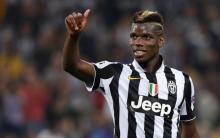
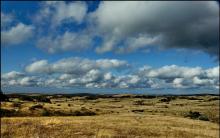
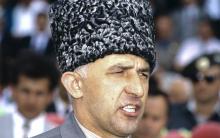






The most beautiful motorcycles in the world
Which sea is the cleanest in the world?
Top 10 Most Expensive Furs
The largest and most luxurious casinos in the world
Knightly orders of Europe XI - XIII centuries